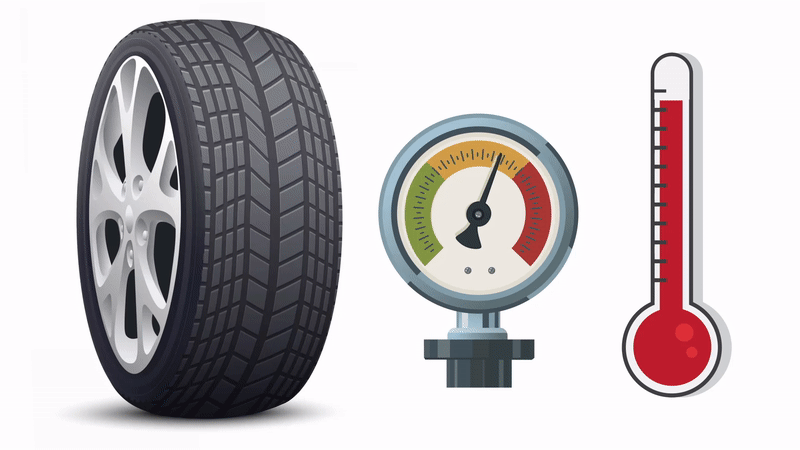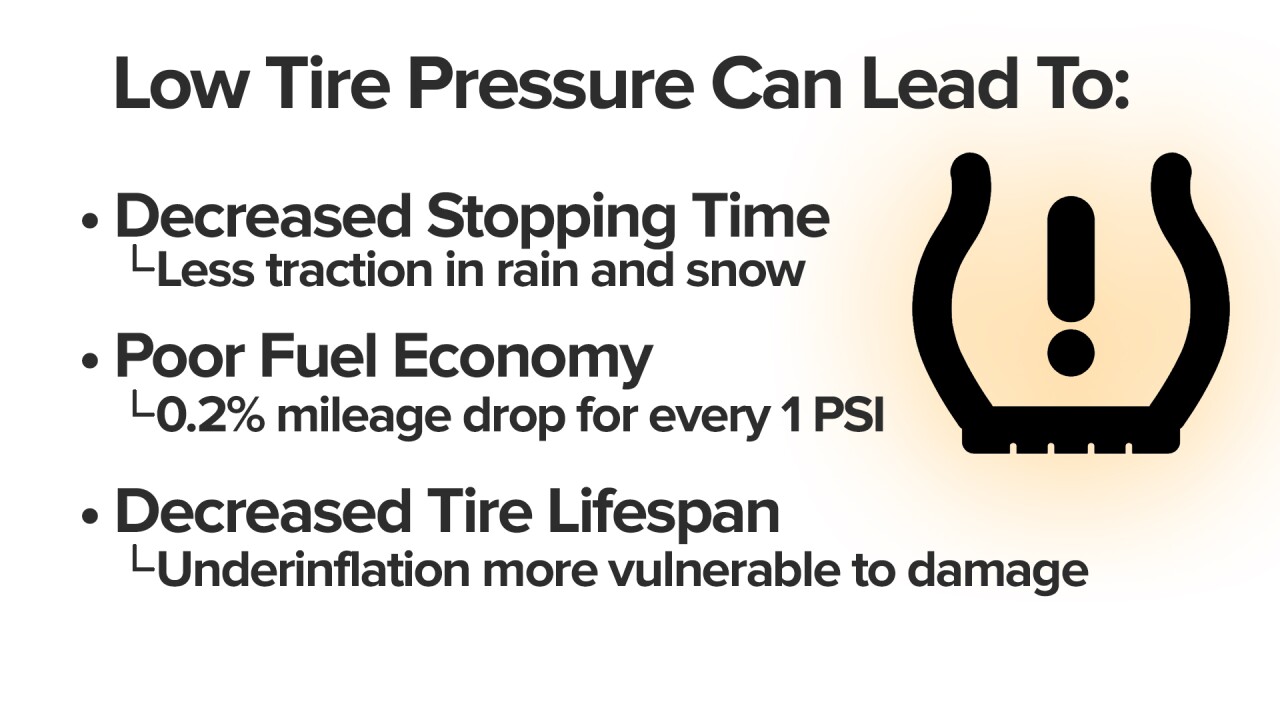Has your car's tire pressure sensor ever lit up or beeped at you as the weather starts getting colder?
Air molecules move faster and spread out in warm weather, but slower and closer together in cold weather.
Cold air is more dense, and takes up less space in objects like a basketball or a car tire!

For every 10 degree drop in air temperature, the pressure in a car tire will fall by about 1 to 2 PSI.
That means at night if the daytime highs are in the 40s and the lows fall to the 20s, your car tires could lose around 2 to 4 units of pressure!
For most cars, this small drop in pressure isn't going to be enough to trigger a tire inflation sensor, but if your tire is already low, it absolutely could.

Not only can low tire pressure lead to a lack of traction in the elements and poor fuel economy, but it can also limit the lifespan of the tire.
Bulging, under-inflated tires can lead to inner wall damage, which will likely mean replacing the whole tire.

Checking your tire pressure is super easy, you just need to know how much air to add to the tire.
You can find the recommended pressure for your vehicle in the owner's manual, or on the driver's side door jamb.
Most cars and crossovers have a recommended pressure of 30 to 35 PSI. You'll want to measure when the tire is "cold" because the pressure will be at its lowest.


